Introduction
Japanese cuisine is cherished worldwide for its delicacy, balance, and beauty. In this article, we introduce the top 5 Japanese foods that we especially recommend for foreigners to try. Our selection criteria focus on the diversity of flavors, ease of access, and the opportunity to deepen the understanding of Japanese culture.
Sushi(寿司)
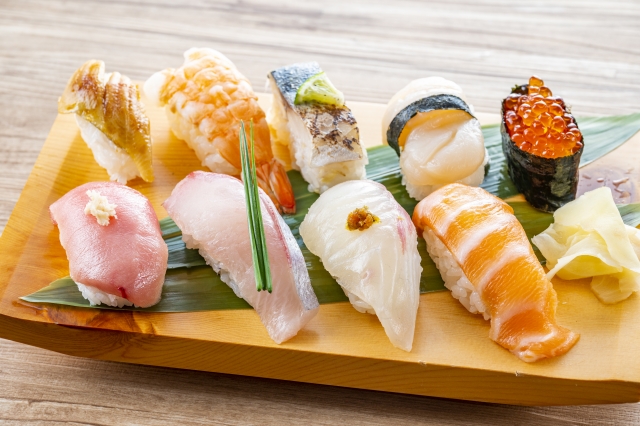
Sushi can be considered a symbol of Japanese cuisine that is simple yet profound. Fresh seafood, seaweed, and even vegetables and eggs are placed atop vinegared rice (shari), each offering its unique flavor. During the Edo period, what we now refer to as “nigiri sushi” became popular among the common folk of Edo (present-day Tokyo). This form of sushi was valued by workers as a convenient fast food that could be easily enjoyed on the go.
The world of sushi offers a wide variety of options that can be enjoyed by both beginners and connoisseurs. Starting with popular choices like tuna and salmon is recommended, gradually moving on to a diverse range of options such as eel, shrimp, and squid. For those seeking further adventure, trying sushi with sea urchin (uni), salmon roe (ikura), or even rare local seafood can be an exciting endeavor. Additionally, the best sushi toppings change with the seasons, allowing for a different taste experience with each visit.
The essence of sushi is not just in the deliciousness of the toppings. The acidity of the rice, the freshness of the toppings, and the balance with wasabi and soy sauce combine to create a unique flavor for each piece of sushi. The skill of the sushi chef also significantly influences the taste of sushi. Top sushi chefs adjust their techniques subtly based on the day’s temperature, humidity, and the condition of the toppings to bring out the best flavors.
Sushi, with its simplicity, holds infinite possibilities. When visiting Japan, try various types of sushi and immerse yourself in its profound world. It will surely become an unforgettable culinary experience.
Unadon(うな重)

Unadon, or eel rice bowl, is a traditional dish that can be considered a quintessential part of Japanese summer. In this dish, grilled eel glazed with a savory sauce is generously served over a bed of fluffy rice. Eel is known for its rich fat content and tender flesh, packed with nutrients such as vitamins A and E, making it extremely effective for preventing summer fatigue and aiding in recovery from exhaustion. It is especially valued as a source of energy during the hot summer months when it’s easy to get worn out.
Another allure of unadon lies in the unique sauce that enhances the eel. This sauce, typically a sweet and savory soy-based concoction, gives the eel a beautiful glaze and depth of flavor. The eel’s skin is grilled to a crisp, while its flesh remains soft and fluffy, creating a perfect harmony with the sauce. The addition of sansho (Japanese pepper) adds a layer of complexity to the dish, highlighting the richness of the eel with a refreshing aroma.
Each restaurant serving unadon may use a secret sauce or employ unique grilling techniques, offering endless variations in flavor. In some regions, there’s a tradition of eating unadon on special days or during celebrations, enriching moments of gathering with family and friends.
When visiting Japan in the summer, be sure to try unadon. Its rich flavor and high nutritional value will provide you with the vitality to overcome the hot summer. Moreover, unadon offers a glimpse into the profound depth of Japanese culinary culture.
Ramen(ラーメン)
Ramen is one of Japan’s signature noodle dishes, captivating many with its rich variety and profound flavors. After originating from China, it evolved uniquely across various regions in Japan and has now gained fame worldwide. Starting from basic flavors like soy sauce, salt, miso, and tonkotsu (pork bone broth), soups made from diverse ingredients such as chicken bones, seafood, and vegetables have fostered unique ramen cultures in different locales.
One of ramen’s charms is its customizability. Not only can you choose the thickness and firmness of the noodles and the intensity of the soup, but there’s also a wide array of toppings available. With options like char siu (barbecued pork), flavored eggs, bamboo shoots, green onions, and seaweed, each shop or region offers distinctive toppings, allowing you to find your perfect bowl.
The regional variations of ramen are also a significant feature. Sapporo ramen from Hokkaido is famous for its miso flavor, characterized by a rich soup and the savory taste of vegetables. Hakata ramen from Kyushu offers a creamy and rich flavor with its tonkotsu-based soup. Tokyo ramen, often soy sauce-based, provides a simple yet deep flavor.
Ramen can be considered a concentrated essence of Japanese food culture. Its diversity, allowing for choices based on one’s mood or preference, and the constant discovery of new delights with each meal, make ramen a beloved dish both in Japan and internationally. Through ramen, one can explore the unique cultures and ingredients of Japan’s regions, finding endless stories in a single bowl.
Soy Sauce Ramen(醤油ラーメン)
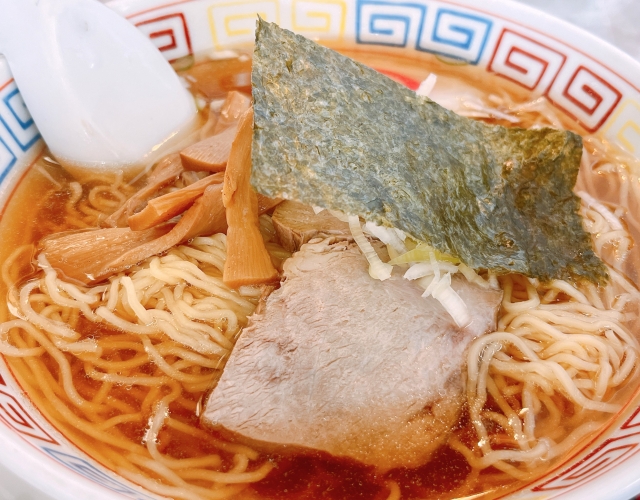
Miso Ramen(味噌ラーメン)
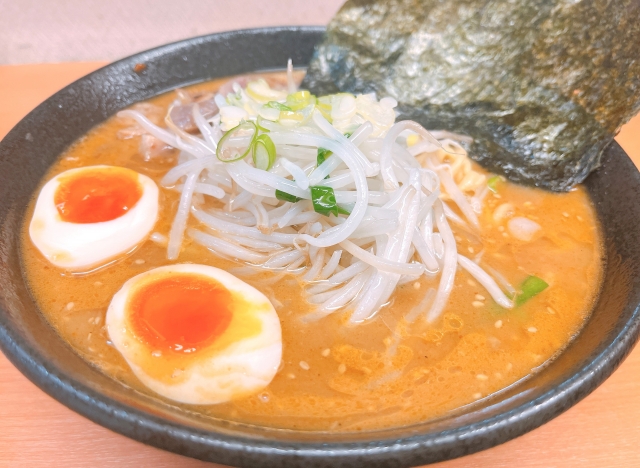
Salt Ramen(塩ラーメン)
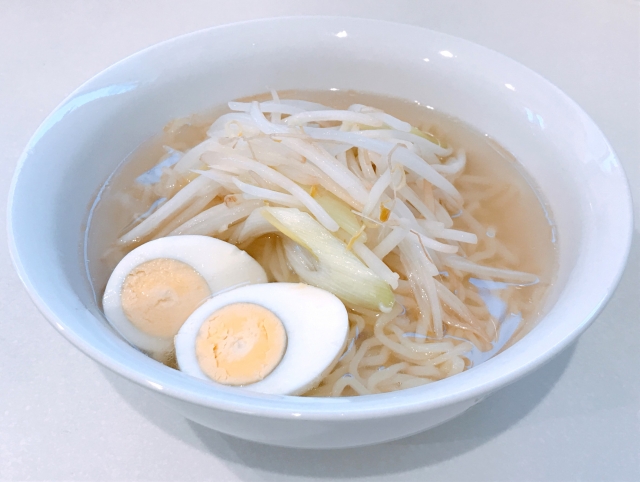
Tonkotsu Ramen(豚骨ラーメン)
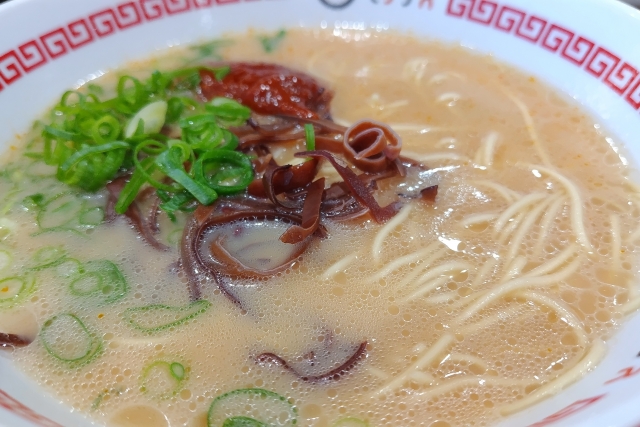
Tempura(天ぷら)
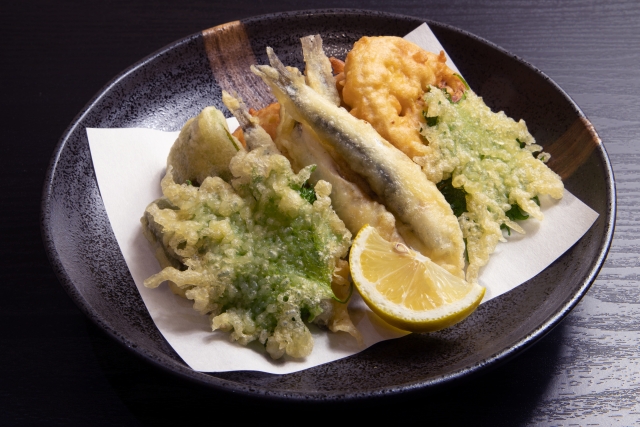
Tempura is one of the Japanese dishes that particularly demands artistry and skill. By thinly slicing vegetables and seafood and lightly frying them in a delicate batter made from flour and egg, tempura brings out the natural flavors of the ingredients to their fullest. Popularized among the common people during the Edo period, tempura is characterized by its simple yet profound taste and is now cherished worldwide as a representative Japanese cuisine.
The essence of tempura lies in its texture at the moment of eating. The ideal tempura is light and crispy on the outside while retaining the juiciness of the ingredients on the inside. Achieving this perfect balance requires meticulous techniques and experience, from mixing the batter to controlling the oil temperature and the frying method.
When enjoying tempura, it is common to savor it simply with salt or a special dipping sauce called tentsuyu. Salt allows the direct taste of the ingredients to come through and is often chosen for vegetables and shrimp. On the other hand, tentsuyu, with its added dashi flavor, provides a deeper taste to the tempura. Adding grated daikon radish or ginger can further enhance the flavor experience.
One of the charms of tempura is the seasonal variety of ingredients it offers. Spring brings bamboo shoots and wild vegetables; summer offers eggplants and bell peppers; autumn presents sweet potatoes and mushrooms; and winter features turnips and shrimp, allowing tempura to reflect the seasons of Japan.
Thus, tempura is a masterpiece of Japanese cuisine that, despite its simplicity, involves a great deal of creativity in selecting ingredients, frying, and tasting. When visiting Japan, be sure to try tempura made with seasonal ingredients. The delicate flavors and textures are sure to provide an unforgettable culinary experience.
Okonomiyaki(お好み焼き)
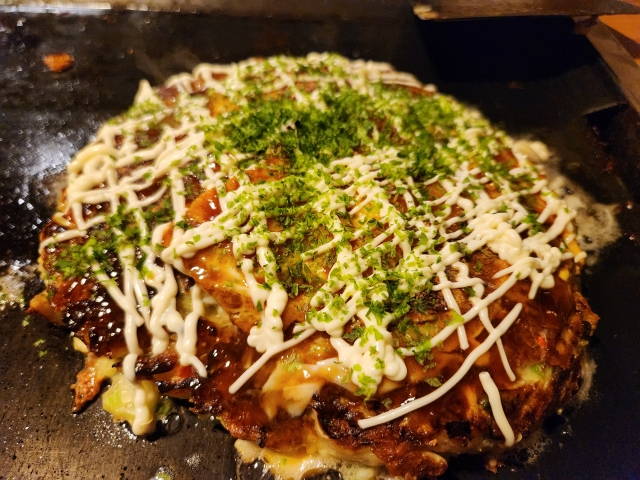
Okonomiyaki is a unique and quintessentially populist dish packed with the charm of Japanese cuisine. Based on a batter made from flour, this dish is cooked with a variety of preferred ingredients such as cabbage, pork, and seafood, allowing for numerous variations “to your liking,” as its name suggests. Notably, there are two main styles: Hiroshima and Kansai, each with its distinct characteristics.
Kansai-style okonomiyaki involves mixing the batter with the ingredients before cooking, a simplicity that has won the hearts of many. In contrast, Hiroshima-style okonomiyaki is characterized by layering the batter, cabbage, and other ingredients, topped off with noodles (usually yakisoba or udon), offering a contrast of textures and layered flavors.
Another joy of okonomiyaki lies in its toppings. A rich okonomiyaki sauce and mayonnaise, sprinkled with bonito flakes and green seaweed, add depth in flavor and aroma. Some stores even offer a wider variety of toppings like raw egg, cheese, and kimchi, allowing for the creation of a personalized okonomiyaki.
Okonomiyaki is not only easy to make at home but can also be enjoyed at specialty restaurants where you can appreciate the skill of professionals. In these restaurants, the performance of cooking on the teppan (iron griddle) in front of customers adds to the enjoyment, ensuring a piping hot okonomiyaki is served right off the grill.
Thus, okonomiyaki is beloved by people of all ages for its rich variety and the fun of customizing to one’s preference. Sampling different styles across Japan allows one to appreciate the richness of regional cultures, making okonomiyaki a dish that truly represents the diverse culinary landscape of Japan.
Conclusion
Japanese cuisine, with its diversity and delicate flavors, is loved worldwide. The dishes introduced in this article, sushi, unadon, ramen, tempura, and okonomiyaki, represent just a fraction of what Japanese cuisine has to offer but serve as an ideal introduction to the allure of Japanese food.
Sushi is synonymous with Japanese cuisine, offering a harmony of fresh seafood and rice. Unadon is a nutritious dish ideal for overcoming the summer heat, while ramen provides a variety of flavors unique to each region. Tempura is a simple yet profound dish that highlights the natural taste of its ingredients, and okonomiyaki is known for its homey warmth and rich variety.
These dishes symbolize Japan’s seasonal changes, regional characteristics, and the Japanese people’s refined approach to food and rich culinary culture. Understanding the history and stories behind each dish deepens the joy of savoring them. When visiting Japan, take the opportunity to explore the depth and diversity of Japanese food culture through these representative dishes. The harmony of flavors they create is sure to become an unforgettable memory.


Comment Comment